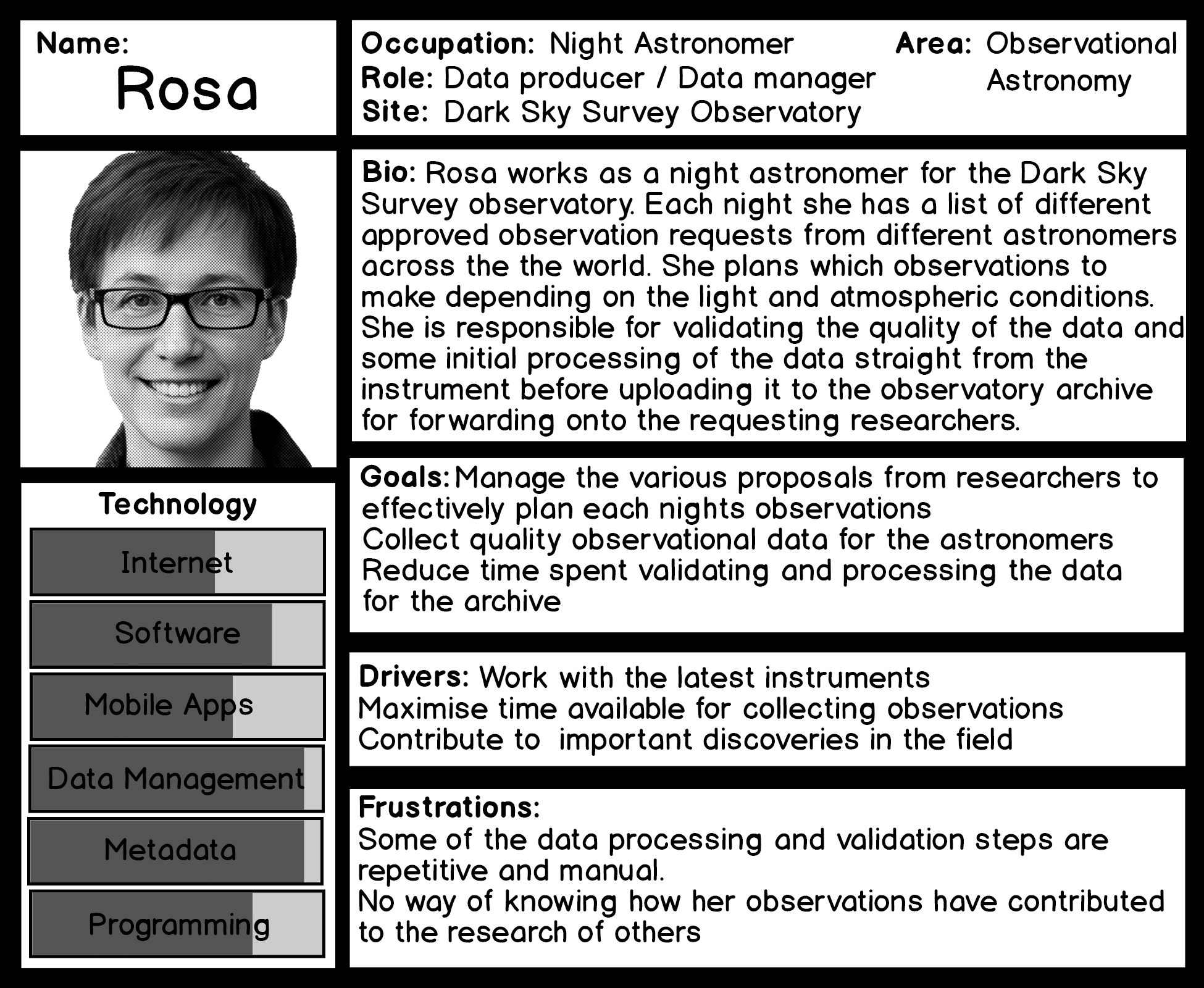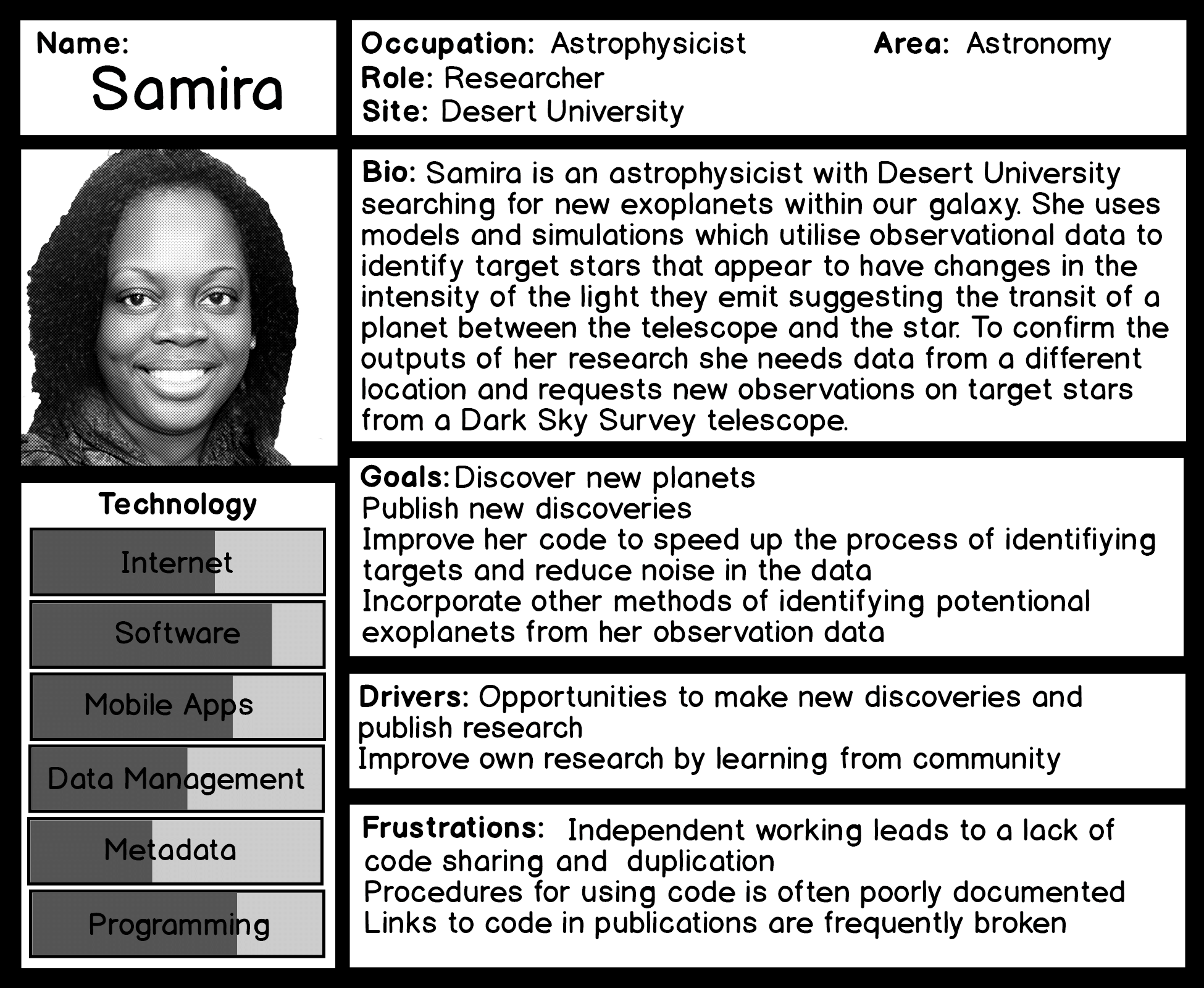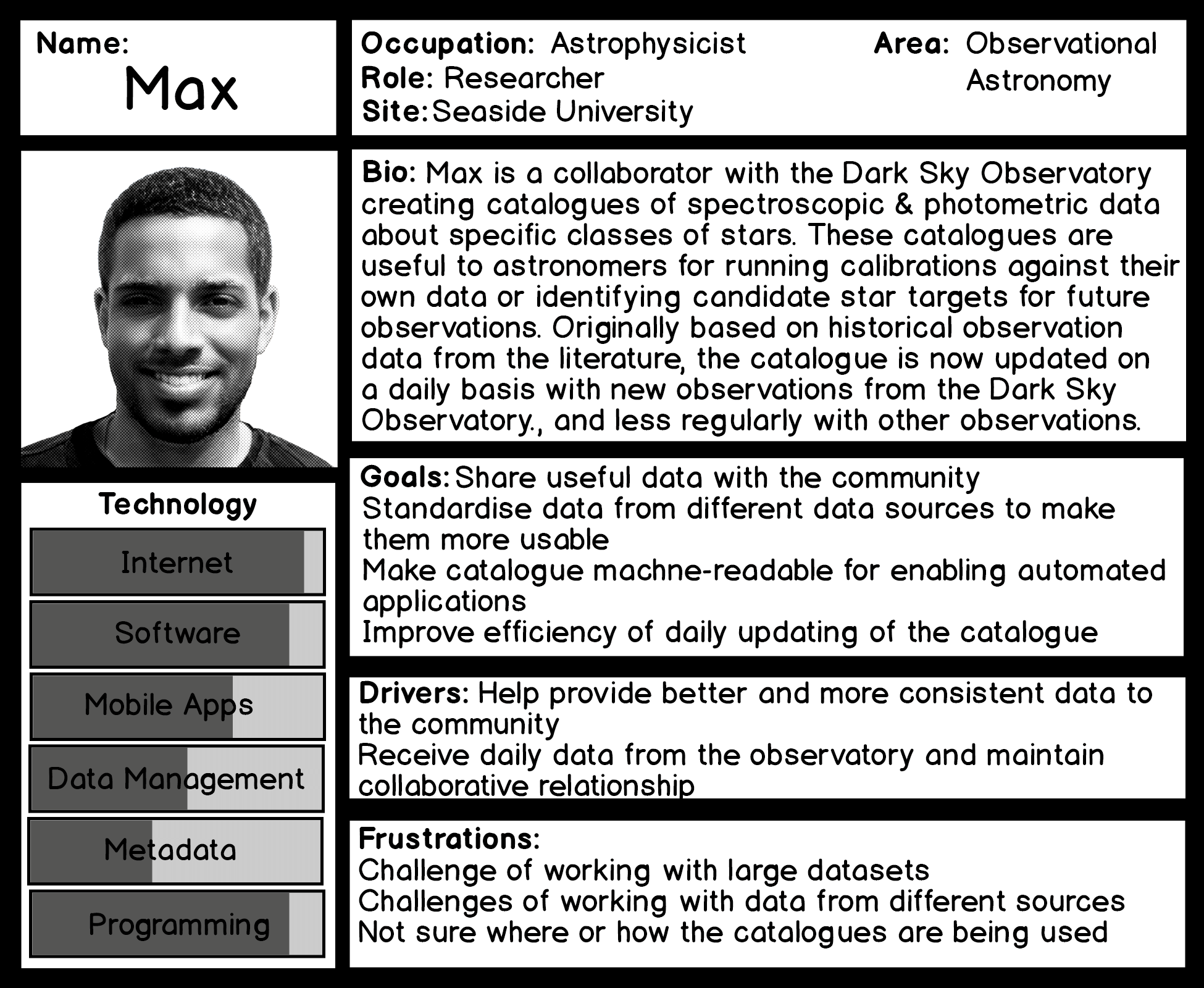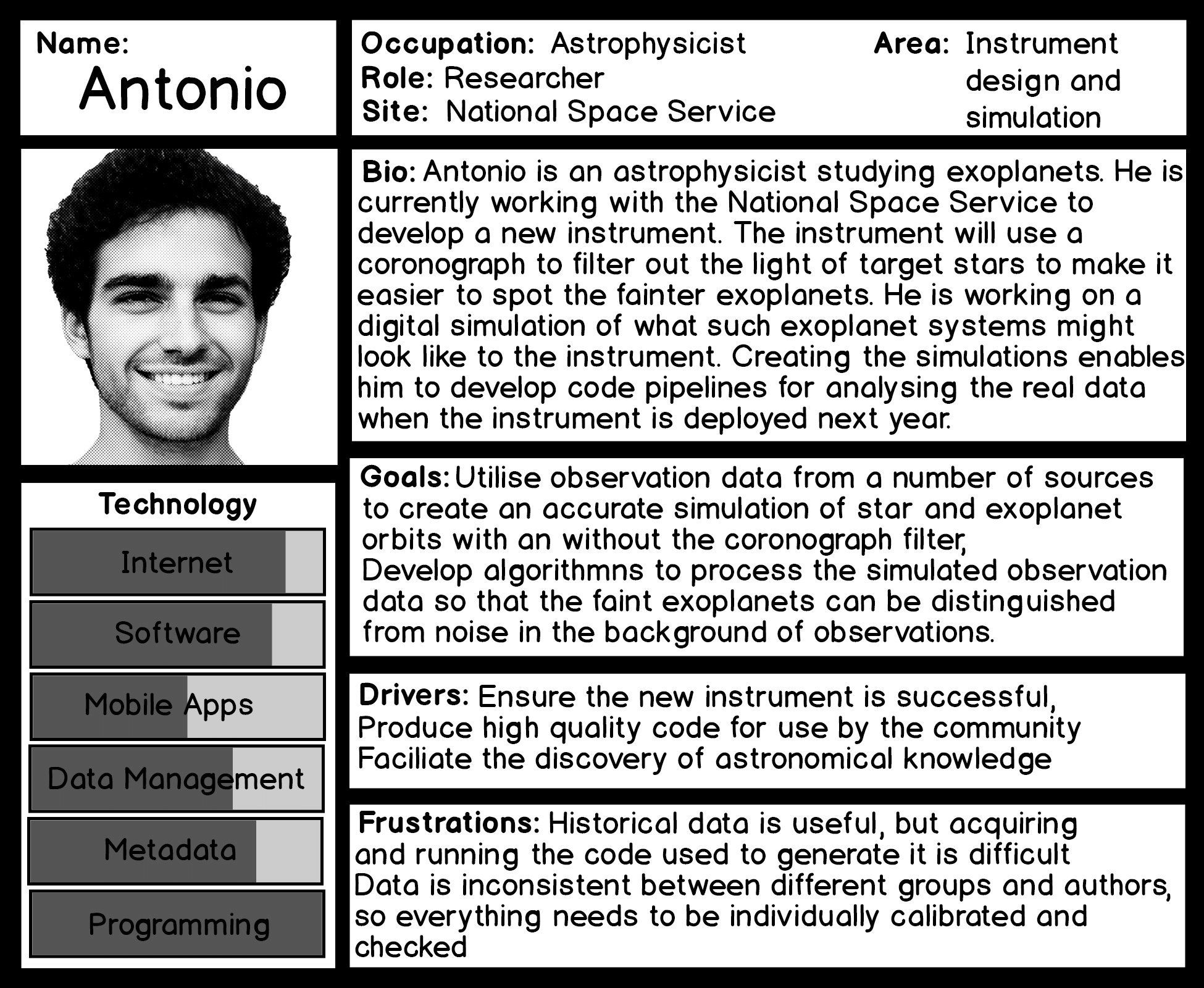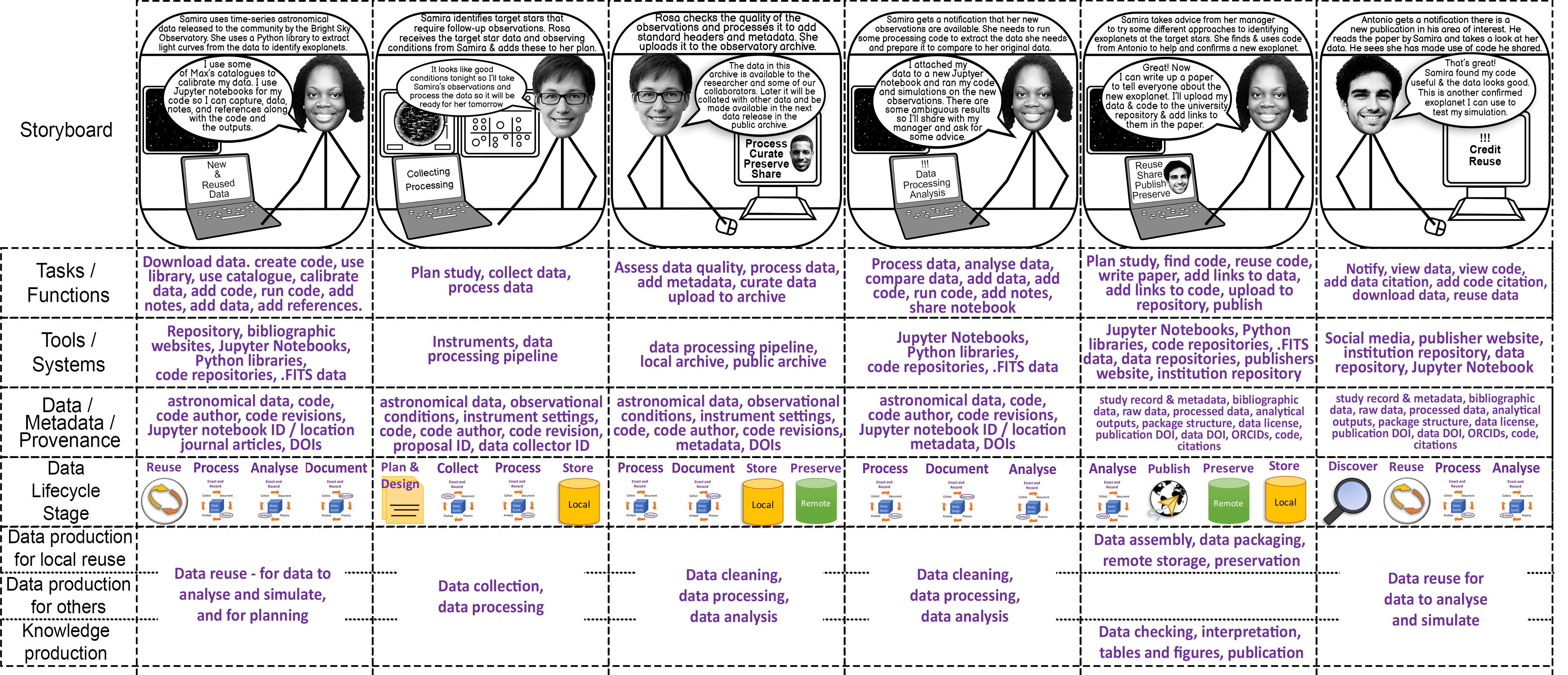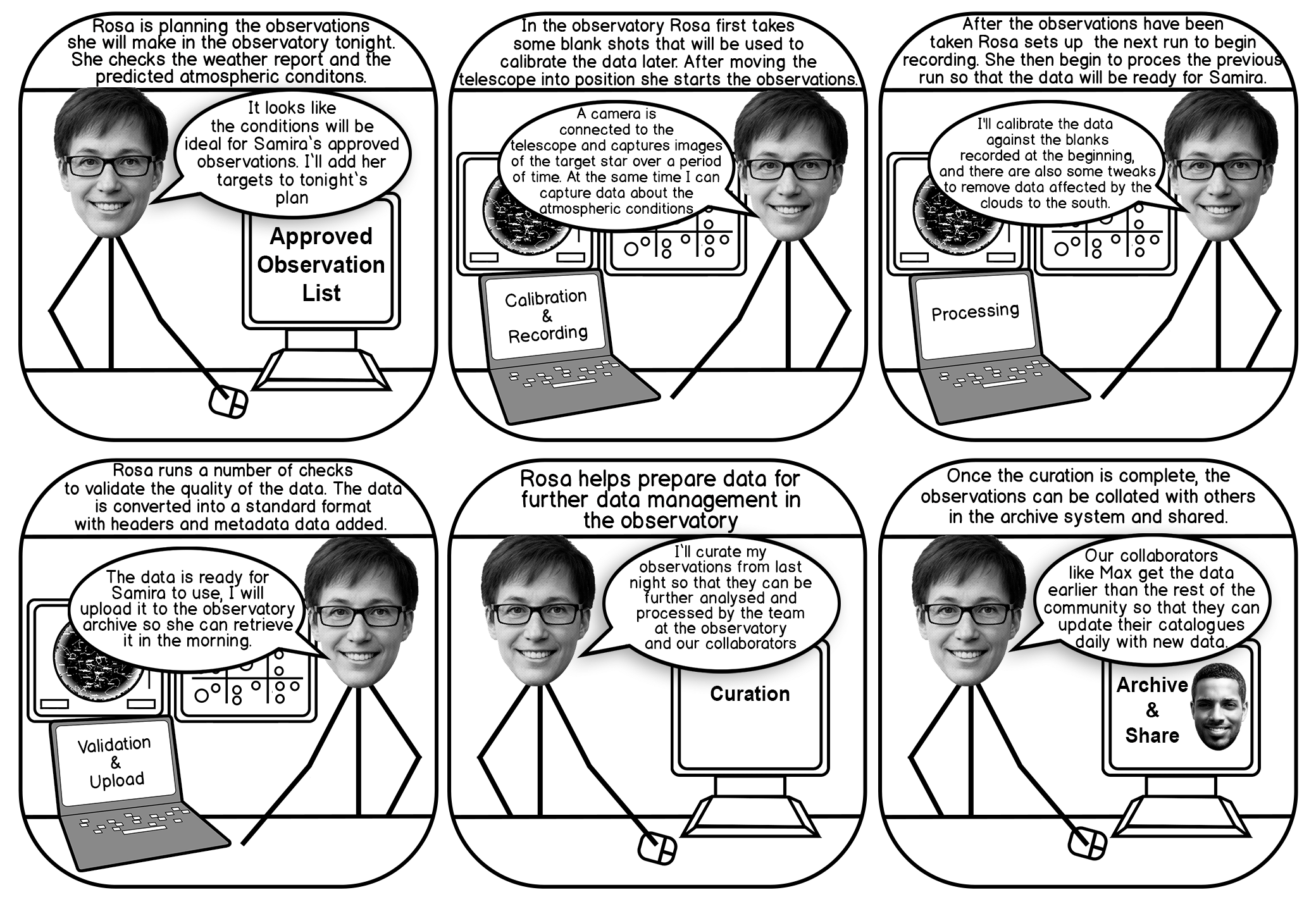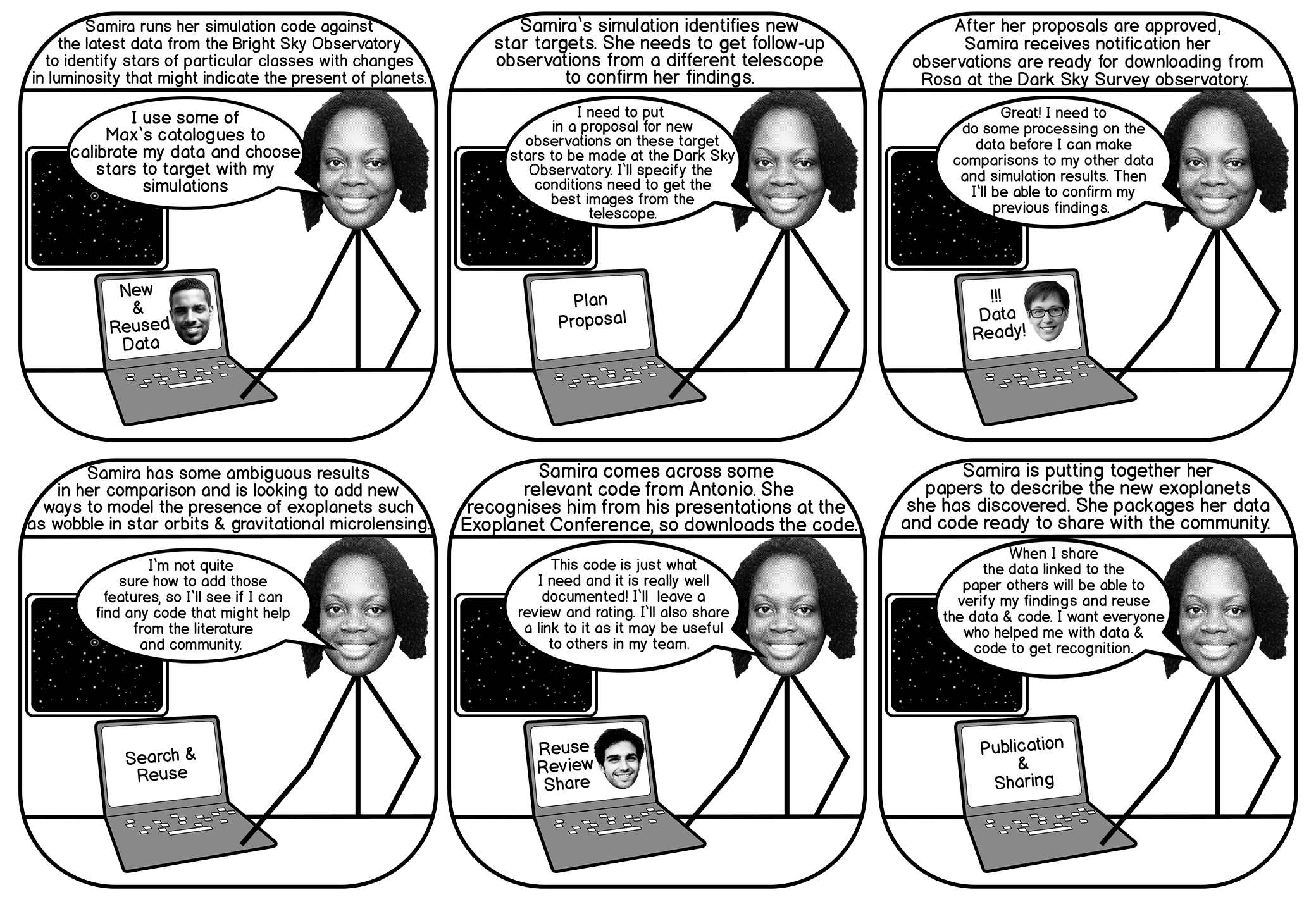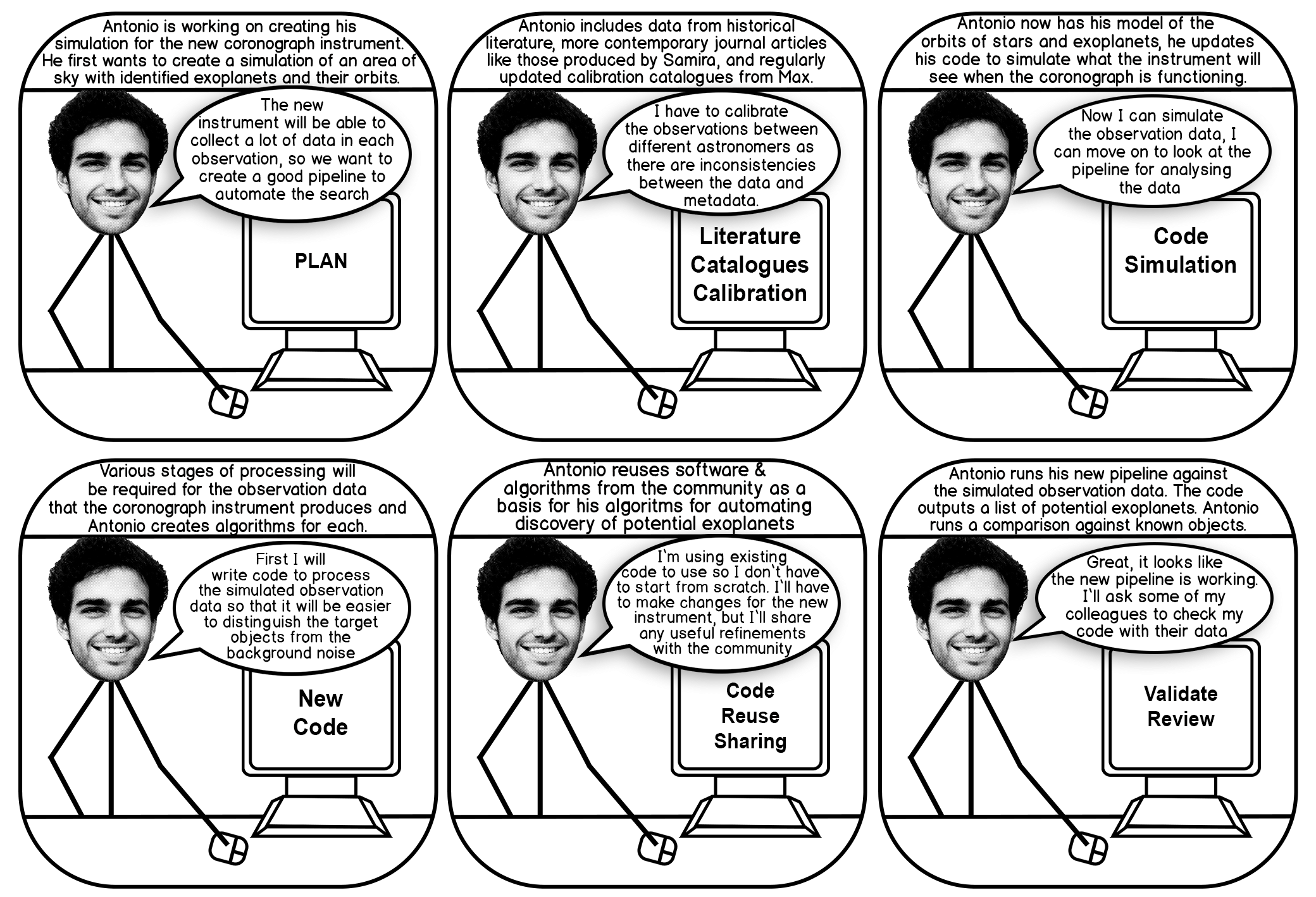Scenario
Rosa works as a night astronomer for the Dark Sky Survey observatory. She takes observations for a number of groups based on approved proposals. She is responsible for some initial processing of the data straight from the instrument and passing it onto the requesting research group. The data is also additionally processed by data management staff in the observatory to curate, archive, maintain, and make available the resulting data available to the wider community after an embargo period. Each data release includes catalogues of visual and spectral information for astronomical phenomena and also special catalogues that focus on specific phenomena or properties that are created in-house or by collaborators.
Max is one such collaborator who creates catalogues of spectroscopic and photometric data about specific classes of stars that are useful to a variety of astronomers for running calibrations against their own data or for identifying candidate stars for future observations. The catalogue was originally based on historical observation data from the literature, but is now updated on a daily basis with new observations from the Dark Sky Observatory. From time to time data releases from other observatories are also incorporated into the catalogue. Max produces the catalogue is produced in a machine-readable format to enable it to be used directly in analysis, modelling and simulations by other astronomers.
Samira is an astrophysicist with Desert University who is searching for new exoplanets within our galaxy. She uses models and simulations that take observational data to identify target stars that appear to have changes in the intensity of the light they emit suggesting the transit of a planet between the telescope and the star. Samira confirms her findings by requesting astronomical observations from one of the Dark Sky Survey telescopes, a different location than the original data. Her follow-up observations often repeated over time, enable her to look for other evidence of the existence of exoplanets such as looking for wobble in the star’s orbit and gravitational microlensing where the passing planet bends the light from distant stars. When Rosa has completed her night’s observations, processed and validated the data it is uploaded to the observatory’s dedicated archive. Samira can then download the data to process for her own research. Samira uses a combination of published software and her own code to process the data ready for analysis or ‘reduction’. For observations taken over multiple nights the data is repeatedly reprocessed to combine the data enabling the comparison of data over time. The data is also compared and calibrated with data from the observations taken from other telescopes. At a later time Samira revisits old observation data to re-run the processing if she comes across better algorithms that can help to improve the quality of the data.
Antonio is also an astrophysicist with the National Space Service studying exoplanets, but he is currently helping to develop a new instrument with a coronograph which will filter out the light of stars under investigation to make it easier to spot the exoplanets themselves. He is working on a simulation of what exoplanet systems might look like to such an instrument, and how the faint traces of the exoplanets can be distinguished from background noise. Simulating what the data will look like from a new instrument enables him to develop code pipelines for analysing the real data when the instrument is deployed next year. Antonio uses observation data from confirmed exoplanets, ambiguous objects, and a variety of known stars to develop his simulations. He uses Max’s star catalogues to help select stars that might be potential targets for the instrument. Although historical observations have less clarity they can contain valuable data for tracking the orbits of astronomical bodies. Antonio has to carefully calibrate observations that he uses from other astronomers against other observations as he finds there are inconsistencies in the data and metadata between different groups and from observations from developing instruments and processed through different software over time.
Rosa, Max, Samira, and Antonio are all researchers. Rosa is primarily a data creator, whereas the others all create and reuse data.
Personas
Personas for Scenario Astronomy
